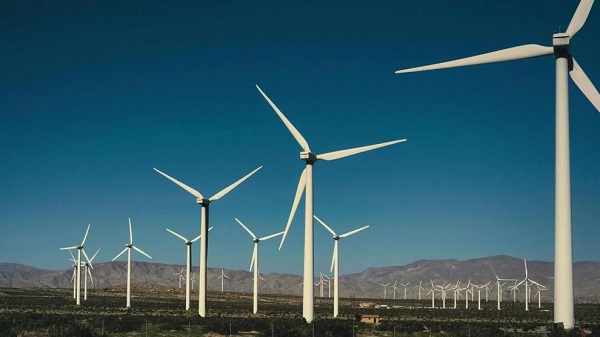2025 Federal Election
Mark Carney’s radical left-wing, globalist record proves he is Justin Trudeau 2.0
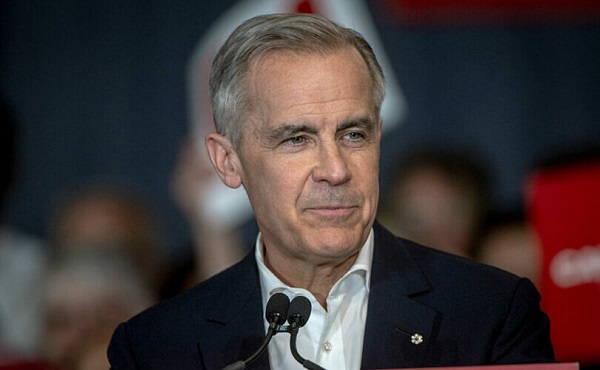
From LifeSiteNews
Despite superficial changes to the packaging, the Liberal brand under Mark Carney’s policies are the same as Trudeau’s.
By now, it has become obvious that the Liberals want the central issue of this election to be Trump’s tariffs and their supposed threat to Canada’s national sovereignty.
The Liberal leader, Mark Carney, is being portrayed as a dauntless hero, who is the only one with “the elbows” capable of taking on Trump. The Liberals have made the 2025 election the shortest in history (37 days) in order to prevent serious scrutiny and exposure of both their last ten years in power and the failures and conflicts of interest that Carney brings to the table. Most of Canada’s mainstream media want the Liberals returned to power so that they can continue to receive payments from the Liberal government’s Media Slush Fund, a.k.a. Heritage Canada. Consequently, most of Canada’s mainstream media are carefully and systematically concealing Carney’s flawed past history. Not so the U.K. media.
UK media scrutiny of Carney
The United Kingdom (UK) media has a direct lived experience of Carney when he was Governor of the Bank of England from July 1, 2013, to March 15, 2020. The British newspapers have been giving off warning signals to Canadians about Carney for some time now. They regard him as highly overblown, someone who left England in economic distress and struggling with raging inflation caused by his banking strategy of printing too much money. Carney’s climate change ideology and net-zero emissions goal has been calamitous for the U.K. As stated by Matthew Lynn (March 10, 2025), former editor of The Daily Telegraph, “Over eight years, Carney … has been a disappointing failure. Despite his huge salary of more than £600,000 [$1.1 million] a year, more than any of his predecessors had been paid, he seemed to have little feel for the role.” Lynn went on to observe that “Carney is the epitome of a remote, globalized, technocratic elite. He is very good at self-promotion, at collecting trophy jobs and, of course, negotiating fabulously generous salaries and expenses for himself along the way. He is just not very good at delivering.”
READ: Mark Carney was an early supporter of government crackdown against Freedom Convoy
As a financial reporter, Lynn has been a long-time observer of Carney’s mediocre performance as Governor of the Bank of England, writing in The Spectator on October 16th, 2016, that Carney “has done very little to improve the British economy. The markets have rumbled that he is not very effective – and they no longer care much whether he stays or goes. In truth, neither should anyone else.”
Benedict Smith, writing in The Daily Telegraph on March 9th, 2025, reminded his readers of Carney’s doomsaying over Britain withdrawing from the European Union (Brexit) which earned him the title the “high priest of Project Fear.” None of Carney’s dire predictions have come true, much to the chagrin of EU loving bureaucrats everywhere.
Even the left-wing Guardian echoed this, describing Carney as the “unreliable boyfriend” due to his habit of sending mixed messages—never a good idea to do when you are “in charge” of the monetary policy of a nation.
If there is a common theme to Carney’s governorships in both Canada and England, it appears to be found in his ability to make bad predictions while printing too much money which only leads to inflationary pressures once he’s left office.
Other views
It is not only the U.K. media that is critical of Carney’s performance. British Conservative MP Jacob Rees-Mogg, a pro-Brexit advocate criticized Carney’s economic predictions, telling the BBC News in November 2018 that Carney was a “second-tier Canadian politician” who “failed” to get a job at home and thus ended up at the Bank of England—not a ringing endorsement.
READ: Conservative MP shares video of Mark Carney praising Communist China’s ‘perspective’
Not only has Carney’s experience as a competent central banker been criticized, his ability as a businessman has also been questioned. While acting as an advisor to Justin Trudeau, he was also Chairman of Brookfield Asset Management which was soliciting at that time, the federal government for $10 billion in funds as part of a $50 billion Canada-only asset fund. Brookfield was also looking to raise $36 billion from Canadian pension funds, the largest of which are public sector, i.e., taxpayer funded, while only contributing $4 billion itself. Because Carney was employed by the Liberal Party of Canada that conveniently did not require conflict of interest disclosures, as opposed to the Prime Minister’s Office that required such disclosures, Carney avoided being asked, let alone answer embarrassing questions on the subject.
Conflicts of interest
The biggest elephant in the room that virtually no one in the mainstream media seems to be interested in, are conflicts of interest that Carney brings to the table. Conflicts of interest come in many varieties for our would-be Prime Minister. Obviously, there are the financial conflicts that come with Carney’s investments as well as those of his wife and immediate family.
However, there are also more serious political conflicts of interest, particularly centered on Brookfield Asset Management ties with Communist China. It is being reported that in October of 2024 Brookfield secured a $256 million loan from a Chinese state-owned bank after Carney met with the deputy director of the People’s Bank of China, Zhu Hexin. The loan was in relation to Brookfield’s refinancing of its commercial property holdings in Shanghai. It is worth noting that at the time, Carney had (in September 2024) been named by former Prime Minster Justin Trudeau as chairman of the Liberal Party’s task force on economic growth. Anyone with even a modest familiarity with the way business is done in China realizes that such loans by state-owned banks are always matters of political importance, no matter the economic rationale, and are the occasion of establishing reciprocal obligations, i.e., I do you this favor today, tomorrow I will ask you a favour in return. This is a troubling fact should Carney be elected prime minister.
READ: WEF video shows Mark Carney pushing financial ‘revolution’ based on ‘net zero’ goals
Of course, the other political conflict of interest yet to be resolved is the question of multiple passports and divided loyalties. Carney has already expressed himself as a “proud European” at the World Economic Forum held in Davos in 2023, but what of being a “proud Canadian”? Dressing up in a Team Canada hockey jersey and playing Canadian Trivial Pursuit in a Liberal advertisement with Canadian born Mike Myers isn’t really a credible assurance of Carney’s patriotism. In fact, Myers himself makes a convincing poster boy for every Canadian who has gone to the United States and made his fortune thanks to American culture and enterprise. Carney and Myers share several common characteristics: both made their careers outside Canada; both have spent little time in Canada; both have multiple citizenships (Carney – Canadian, Irish, and British, Myers – Canadian, US, and British); and both are not shy about telling Canadians how to be Canadian!
Carney has a plan to build 500,000 houses. Funding for this project will be provided by his previous employer, Brookfield Asset Management and the federal government. There will be no difficulty in obtaining the taxpayers’ money for this project if Carney is elected prime minister. This housing, however, is to provide Soviet-style rental housing, built not by developers, but by bureaucrats. Under this plan, Brookfield stands to make billions of dollars over the years in rental fees and Carney will make millions of dollars since he has retained $6.8 million in shares in Brookfield. The public, however, wants to own property, not live in rental property. It seems that this project is a win-win for Brookfield and Carney, not so much for Canadians.
Carney’s potential conflicts of interest are not confined to just political and financial, as they also include conflicts brought to the table by his wife, Diana Fox Carney. Mrs. Carney has long involvement with leftist climate change causes and organizations, including being a senior advisor at Eurasia Group, a political risk consulting company, where she is a colleague of Liberal strategist and friend of Justin Trudeau, Gerry Butts, Trudeau’s former Chief of Staff.
Carney’s campaign
Carney’s efforts in the campaign raises several concerns. Right from the start Carney’s campaign has been plagued with missteps: Carney’s logo had to be changed because it too closely resembled a logo of a collection agency, MetCredit. Carney has had unpleasant interactions with reporters pressing him about disclosure of his assets and avoided answering their questions. He lied about his involvement in moving Brookfield Asset Management’s head office out of Canada to New York City, a significant financial loss to Canada. He did not know the name of the school where the tragic Montreal massacre of 1989 took place, and he has refused to participate in a debate in French on TVA, Quebec’s independent television network. Carney also refused to dismiss Liberal candidate Paul Chaing, who had recommended that his Conservative opposition, Joe Tay, be taken to the Toronto Chinese consulate to be returned to Hong Kong where there would be a 1 million Hong Kong dollar bounty on his life. Mr. Tay had made posts opposing the Beijing government. Carney recently wore a Team Canada hockey jersey emblazed with the American Nike “swoosh” symbol—Nike, of course, being a huge American corporation selling sports equipment. Why is a would-be Canadian Prime Minister being photographed wearing a symbol of a successful American corporation? Even Carney’s selection of a riding to run in, Nepean in Ottawa, was not without its problems as it involved the dumping of the current Liberal MP, Chandra Arya, who was born in India, on the pretext of his alleged foreign interference, supposedly from India. For those outside Ottawa, Nepean is considered a “safe” Liberal seat with a high percentage of federal government employees and a large population of immigrants from India.
Trust and character
Character matters, especially when Carney is asking for the trust of the Canadian electorate. Carney himself has called his character into question.
Recent revelations of Carney plagiarizing sections of his Oxford Ph.D. thesis call into question his intellectual honesty and integrity. This is particularly troubling given the fact that Carney’s claim to being an “expert” largely rests on his doctorate qualification. Plagiarism is a form of lying, claiming someone else’s ideas as your own. And there is certainly an alarming pattern emerging of Carney lying about his accomplishments whether it is about his thesis or involvement with moving Brookfield’s headquarters to New York or having worked with former Finance Minister Paul Martin, indicating that his work with Mr. Martin led to a balanced budget. In fact, Mr. Martin balanced the budget a year before Carney’s involvement.
READ: Mark Carney accused of plagiarism in 1995 Oxford doctoral thesis
Similarly, can Carney be trusted to deal with the problems of Canada’s immigration system? Doubtful, especially when Carney added Mark Wiseman to his backroom advisors. Wiseman is co-founder of the “Century Initiative,” a group calling for a massive increase in Canada’s immigration levels, with the ultimate goal of bringing the country’s population to 100 million by 2100. The problems with such massive immigration are many, the least of which is that this has been rejected by Canadians. A Leger poll conducted in July of 2024 found that 60% of Canadians were of the view that immigration levels were too high. Yet here we are in the spring of 2025, and Carney appears to be following Trudeau’s same mass immigration policies and listening to people such as Wiseman despite the fact that such policies are poison in Quebec as well as in the rest of Canada. Given Carney’s need for Quebec votes, one wonders about the prudence of Carney’s association with the Century Initiative project by actively courting the advice of its co-founder.
Generally speaking, one does not want to give power to people one cannot trust. To be fair, no one is perfect, and one or two missteps are to be expected. However, under the circumstances, Carney and the Liberals have amassed a significant number of serious missteps giving Canadians no reason to trust them.
Carney is not the agent of change
Carney is merely Trudeau 2.0, enacting Liberal extremist policies and willing to do anything to impose his own climate change/World Economic Forum agenda and personal ideology on a country which he has already signaled is in need of a new course, different from what the Liberals have given Canadians these past ten years. Judging from the current “news” coming from the Liberals it appears that once again the Liberals are tone-deaf to the genuine needs of Canadians and their families. Maintaining power is the Liberal Party’s only concern. Under Carney, Trudeau’s legacy is all but guaranteed to continue, only worse. Don’t forget, Carney himself was the chief economic adviser to the Trudeau government since the summer of 2020—that’s almost five years of Carney-inspired policies Canadians have been suffering through!
READ: Mark Carney is trying to market globalism as a ‘Canadian value.’ Will it work?
Despite superficial changes to the packaging, the Liberal Brand under Carney’s policies are the same as Trudeau’s because the Liberal Party is the same: same advisors, i.e., Tom Pitfield, Katie Telford, Trudeau’s former Chief of Staff, Gerry Butts; same cabinet, although slightly re-shuffled to give the appearance of “change”; and the same belief in the net-zero ideology of the Marxist-driven climate change hysteria. By appointing two former Trudeau cabinet ministers as his top advisers, Marco Mendicino as chief of staff and David Lametti, the former Justice Minister who brought in the MAID legislation, as part of the transition team, Carney is signaling to the Laurentian Elite not to worry, the only change coming is more of the same!
Reprinted with permission from REAL Women of Canada.
2025 Federal Election
Post election report indicates Canadian elections are becoming harder to secure
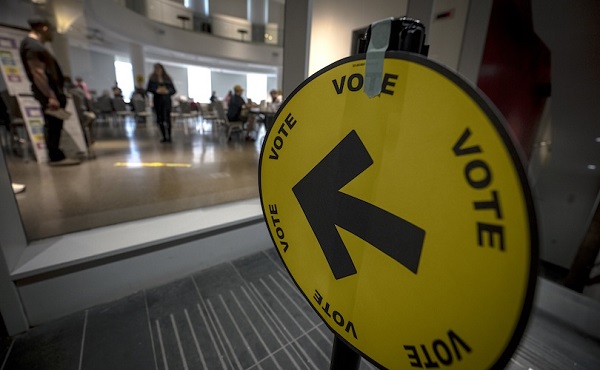
Chief Electoral Officer Stéphane Perrault highlights strong participation and secure voting, but admits minority politics, rising costs, and administrative pressures are testing the system’s limits.
Monday in Ottawa, Stéphane Perrault, Canada’s Chief Electoral Officer, delivered a long press conference on April’s federal election. It was supposed to be a victory lap, record turnout, record early voting, a secure process. But if you listened closely, you heard something else: an admission that Canada’s election machinery is faltering, stretched thin by a system politicians refuse to fix.
Perrault touted the highest turnout in 30 years, 69 percent of eligible voters, nearly 20 million Canadians. Almost half of those ballots were cast before election day, a dramatic shift in how citizens take part in democracy.
“Twenty years ago, less than 7% voted early. This year, nearly half did,” Perrault told reporters. “Our system may have reached its limit.”
That’s the core problem. The system was built for one decisive day, not weeks of advance voting spread across campuses, long-term care homes, mail-in ballots, and local Elections Canada offices. It’s no longer a single event; it’s an extended process that stretches the capacity of staff, polling locations, and administration.
Perrault admitted bluntly that the 36-day writ period, the time between when an election is called and when the vote happens, may no longer be workable. “If we don’t have a fixed date election, the current time frame does not allow for the kind of service preparations that is required,” he said.
And this is where politics collides with logistics. Canada is once again under a minority government, which means an election can be triggered at almost any moment. A non-confidence vote in the House of Commons, where opposition parties withdraw support from the government, can bring down Parliament in an instant. That’s not a flaw in the system; it’s how parliamentary democracy works. But it leaves Elections Canada on permanent standby, forced to prepare for a snap election without knowing when the writ will drop.
The result? Sixty percent of voter information cards were mailed late this year because Elections Canada couldn’t finalize leases for polling stations on time. Imagine that, more than half the country got their voting information delayed because the system is clogged. And that’s when everything is supposedly working.
The April election cost an estimated $570 million, almost identical to 2021 in today’s dollars. But here’s the kicker: Elections Canada also spent $203 million just to stay ready during three years of minority Parliament. That’s not democracy on the cheap. That’s bureaucracy on retainer.
Perrault admitted as much: “We had a much longer readiness period. That’s the reality of minority governments.”
No Foreign Interference… But Plenty of ‘Misinformation’
Canada’s top election official wanted to make something perfectly clear: “There were no acts of foreign interference targeting the administration of the electoral process.” That’s the line. And it’s a good one… reassuring, simple, the kind of phrase meant to make headlines and calm nerves.
But listen closely to the wording. He didn’t say there was no interference at all. He said none of it targeted the administration of the vote. Which raises the obvious question: what interference did occur, and who was behind it?
Perrault admitted there was “more volume than ever” of misinformation circulating during the 2025 election. He listed the greatest hits: rumors that Elections Canada gives voters pencils so ballots can be erased, or claims that non-citizens were voting. These are hardly new — they’ve appeared in the U.S. and in Europe too. The difference, he said, is scale. In 2025, Canadians saw those narratives across more channels, more platforms, more communities than ever before.
This is where things get interesting. Because the way Perrault framed it wasn’t that a rogue actor or a foreign intelligence service was pushing disinformation. He was blunt: this was a domestic problem as much as anything else. In his words, “whether foreign or not,” manipulation of information poses the “single biggest risk to our democracy.”
Perrault insists the real danger isn’t foreign hackers or ballot-stuffing but Canadians themselves, ordinary people raising questions online. “Information manipulation, whether foreign or not, poses the single biggest risk to our democracy,” he said.
Well, maybe he should look in the mirror. If Canadians are skeptical of the system, maybe it’s because the people running it haven’t done enough to earn their trust. It took years for Ottawa to even acknowledge the obvious , that foreign actors were meddling in our politics long before this election. Endless commissions and closed-door reports later, we’re told to stop asking questions and accept that everything is secure.
Meanwhile, what gets fast-tracked? Not a comprehensive fix to protect our democracy, but a criminal investigation into a journalist. Keean Bexte, co-founder of JUNO News, is facing prosecution under Section 91(1) of the Canada Elections Act for his reporting on allegations against Liberal candidate Thomas Keeper. The maximum penalty? A $50,000 fine and up to five years in prison. His reporting, incidentally, was sourced, corroborated, and so credible that the Liberal Party quietly dropped Keeper from its candidate list.
If people doubt the system, it isn’t because they’re gullible or “misinformed.” It’s because the government has treated transparency as an afterthought and accountability as an inconvenience. And Perrault knows it. Canadians aren’t children to be scolded for asking questions, they’re citizens who expect straight answers.
But instead of fixing the cracks in the system, Ottawa points the finger at the public. Instead of rebuilding trust, they prosecute journalists.
You don’t restore faith in democracy by threatening reporters with five years in prison. You do it by showing, quickly and openly, that elections are beyond reproach. Until then, spare us the lectures about “misinformation.” Canadians can see exactly where the problem lies, and it isn’t with them.
The Takeaway
Of course, they’re patting themselves on the back. Record turnout, no servers hacked, the trains ran mostly on time. Fine. But what they don’t want to admit is that the system barely held together. It was propped up by 230,000 temporary workers, leases signed at the last minute, and hundreds of millions spent just to keep the lights on. That’s not stability. That’s triage.
And then there’s the lecturing tone. Perrault tells us the real threat isn’t incompetence in Ottawa, it’s you, Canadians “sharing misinformation.” Excuse me? Canadians asking questions about their elections aren’t a threat to democracy, they are democracy. If the government can’t handle people poking holes in its story, maybe the problem isn’t the questions, maybe it’s the answers.
So yes, on paper, the 2025 election looked like a triumph. But listen closely and you hear the sound of a system cracking under pressure, led by officials more interested in controlling the narrative than earning your trust. And when the people running your elections think the real danger is the voters themselves? That’s when you know the elastic isn’t just stretched. It’s about to snap.
Subscribe to The Opposition with Dan Knight .
For the full experience, upgrade your subscription.
2025 Federal Election
NDP’s collapse rightly cost them official party status
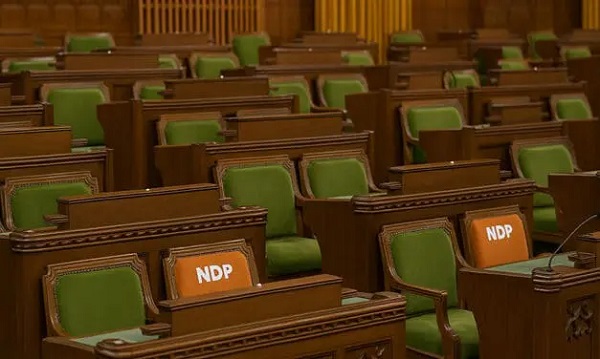
This article supplied by Troy Media.
 By Michael Taube
By Michael Taube
Official party status requires 12 seats. The NDP got seven. End of story
Rules are rules.
That, in a nutshell, is why the NDP wasn’t granted official party status in the House of Commons on Monday. Prime Minister Mark Carney and the
Liberals, to their credit, made the right decision.
Let’s examine why.
The 1963 Senate and House of Commons Act passed an amendment that gave an annual allowance to party leaders other than the prime minister and
leader of the Opposition. In doing so, the Canadian government had to establish what constitutes a “political party.” The definition they came up with was a sensible one: it had to have a “recognized membership of 12 or more persons in the House of Commons.”
This important amendment is still used today.
The NDP fell from 24 to a paltry seven seats in last month’s federal election. (There are a total of 343 seats in the House of Commons.) They finished with 1,234,673 votes, or 6.29 per cent, which was behind the Liberals, Conservatives and Bloc Québécois. Party leader Jagmeet Singh, who had represented the former Burnaby South riding since 2019, finished a distant third in the newly created Burnaby Central riding and resigned.
The NDP’s seven seats is well below the 12-seat requirement needed for official party status. This means Canada’s socialist alternative won’t be able to ask questions in the House of Commons and will lose out on money for research purposes.
Or, to put it another way, they’re plumb out of luck.
Hold on, some people said. They pointed out that the NDP’s seat count and popular vote only plummeted because many progressive voters backed Carney and the Liberals as the best option to counter U.S. President Donald Trump and his tariffs. They felt that the NDP’s long history as a champion for unions and the working class should count for something. They suggested there should be an exception to the rule.
Guess what? They’re wrong.
This is the worst election result in the party’s history. Even its predecessor, the Co-operative Commonwealth Federation (CCF), did marginally better in its first campaign. The CCF won seven out of 245 seats—and earned 410,125 votes, or 9.31 per cent—in the 1935 election. Party leader J.S. Woodsworth, who had represented the riding of Winnipeg North Centre as an Independent Labour MP since 1925, comfortably held his seat.
Meanwhile, this won’t be the first time they’ve ever lost official party status.
The NDP dropped from 43 to nine seats in the 1993 election. It was a dismal showing, to say the least. There was a suggestion at the time that then-party leader Audrey McLaughlin, the first woman to lead a party with political representation in Canada’s House of Commons, deserved a better fate. While the NDP certainly came closer to achieving the 12-seat requirement in this particular election, Prime Minister Jean Chrétien and the Liberals decided against granting them official party status.
Why? As I mentioned earlier, rules are rules.
Then again, British pilot Harry Day notably told his fellow flying ace Douglas Bader in 1931, “You know my views about some regulations—they’re written for the obedience of fools and the guidance of wise men.”
Does this mean that individuals and organizations who follow rules are, in fact, fools? Not at all. While certain rules in a liberal democratic society can range from slightly questionable to utterly ridiculous, they’re usually put in place for a specific purpose.
In the case of the House of Commons, it’s to ensure that a bar has been set with respect to political representation. Is 12 seats the right number? That’s difficult to say. It certainly prevents small protest parties and one-issue parties that unexpectedly win a tiny number of seats in an election from acquiring power and status right off the bat. They need to win more seats and grow in size and stature to reach a point of respectability. Most of them never reach this point and disappear while others float in a constant state of mediocrity like the Green Party of Canada. ’Tis the nature of the political beast.
One final point. If Singh and the NDP had reached double digits in total number of seats in 2025, a solid case could have been made in favour of official party status. If they had finished with 11 seats, it would have almost been a lock. Neither scenario ultimately materialized, which is why Carney and the Liberals did exactly what they did.
Michael Taube is a political commentator, Troy Media syndicated columnist and former speechwriter for Prime Minister Stephen Harper. He holds a master’s degree in comparative politics from the London School of Economics, lending academic rigour to his political insights.
Troy Media empowers Canadian community news outlets by providing independent, insightful analysis and commentary. Our mission is to support local media in helping Canadians stay informed and engaged by delivering reliable content that strengthens community connections and deepens understanding across the country.
-
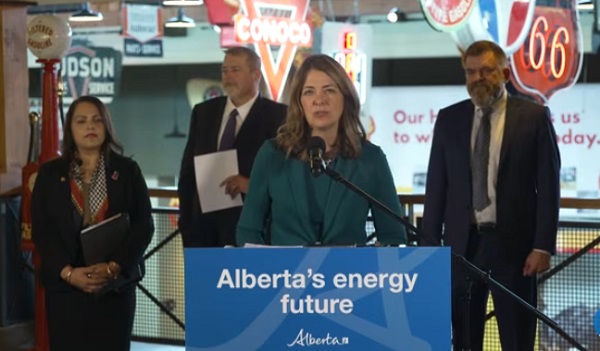
 Alberta15 hours ago
Alberta15 hours agoWith no company willing to spearhead a new pipeline under federal restrictions, Alberta takes the lead
-
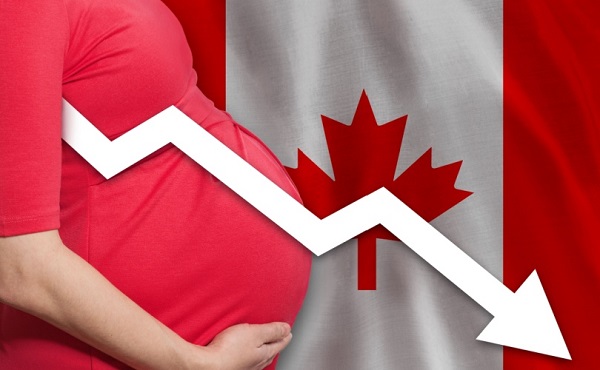
 National1 day ago
National1 day agoCanada’s birth rate plummets to an all-time low
-
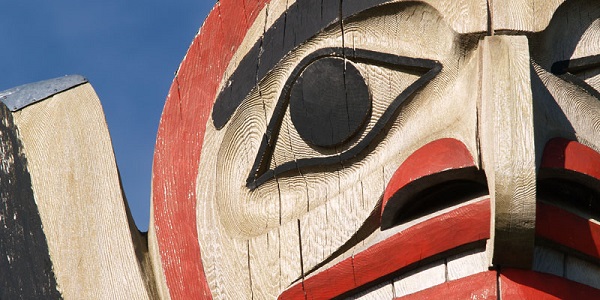
 Fraser Institute2 days ago
Fraser Institute2 days agoAboriginal rights now more constitutionally powerful than any Charter right
-

 Alberta2 days ago
Alberta2 days ago$150 a week from the Province to help families with students 12 and under if teachers go on strike next week
-

 espionage1 day ago
espionage1 day agoNorth Americans are becoming numb to surveillance.
-
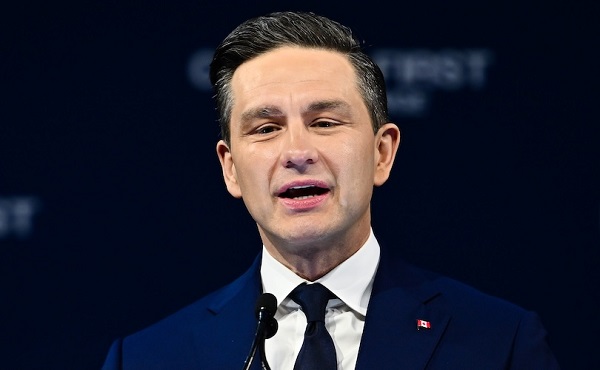
 Crime1 day ago
Crime1 day agoPierre Poilievre says Christians may be ‘number one’ target of hate violence in Canada
-

 Alberta15 hours ago
Alberta15 hours agoTaxpayers: Alberta must scrap its industrial carbon tax
-

 Alberta14 hours ago
Alberta14 hours agoHalfway River First Nation makes history with Montney natural gas development deal





